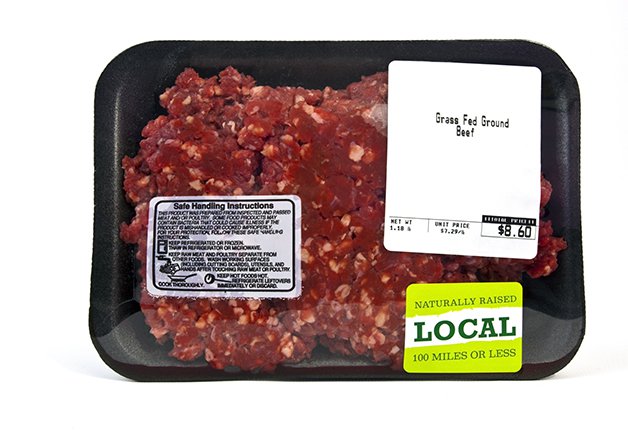How to Lose Weight in a Week
Losing weight is tricky. For most people, it takes time. But if you are looking to shed a reasonable amount of weight, around one to two pounds, in a short amount of time, you will need to make adjustments to your diet, your lifestyle, and commit to daily exercise. Focus on losing weight in a healthy way within one week, and avoid not eating or over-exercising. Studies show that shedding weight gradually leads to more sustainable weight loss and a healthier lifestyle.[1]
Steps
Part 1 Adjusting Your Diet
-
1
Consume more vegetables, healthy fats, and lean protein. Shape your meals so they contain one protein source, one low fat source and one low carb vegetable source. Your carb intake should be in the recommended range of 20-50 grams per a day.[2] Don't feel that you must restrict yourself to a small number of foods. You can enjoy a wide variety of healthy foods that provide a large array of nutrients.
- Healthy protein sources include egg whites, soy products, and chicken. Fish such as salmon and trout, as well as shellfish like shrimp and lobster are also good sources of protein in a healthy diet. Non-fat greek yogurt is also a good way to get protein and dairy in your diet.
- Low carb vegetables include: broccoli, cauliflower, spinach, kale, brussels sprouts, cabbage, swiss chard, lettuce, cucumber, and celery. Steaming or baking vegetables, rather than frying them, will ensure you receive all the nutrients and antioxidants in low carb veggies for the week.
- Healthy fat sources include avocados and nuts, as well as olive oil, coconut oil, and avocado oil. These oils are healthier alternatives to cooking with animal fats or heavily saturated fats.
-
2
Cut out carbs, sugars, and animal fats. Foods high in carbs and sugars cause your body to secrete insulin, which is a main fat storage hormone in your body. When your insulin levels go down, your body can start to burn fat. It also helps your kidneys shed excess sodium and water, which will help you reduce any water weight.[3]
- Avoid foods high in starch and carbs like potato chips, french fries, and white breads. You should also avoid consuming foods high in sugar like soft drinks, candy, cakes, and other junk food.
- Animal fats found in red meat and gamey meat like lamb can be fattening and slow down your metabolism as they are difficult to digest. Skip the steak or the lamb burger for one week as part of your meal plan.
-
3
Have natural sugars, rather than artificial sugars. Rather than have a piece of candy for a quick snack, replace it with fruit that is low in sugar, such as raspberries, blackberries, blueberries, or strawberries. Replace the sugar in your morning coffee with a natural sugar like Stevia or a spoon of honey.[4]
- Your diet should focus mostly on healthy sources of protein, fat, and vegetables. But you should also include healthy sugar options such as fruit.
-
4
Create a seven day meal plan. This meal plan should include three main meals (breakfast, lunch, dinner), scheduled at the same time of day, as well as two small snacks (between breakfast and lunch, and lunch and dinner), also schedule at the same time of day. This will ensure you eat at a consistent time for all seven days and do not skip or miss a meal. Eating about 1,400 calories a day, combined with daily exercise, can lead to healthy weight loss.[5]
- A meal plan is essential to the success of your weight-loss program. It keeps you aware of what you will be eating throughout the day and the entire week. This helps you stay on track.
- Make a grocery list based on your meal plan and go food shopping for the week on Sunday. Stock your fridge with all the necessary ingredients to make your meals for the week so you can prepare each meal easily and quickly.[6]
-
5
Have a small, protein heavy breakfast. Kickstart your day with a protein filled breakfast that will give you energy (and keep your blood sugar up) for the rest of the day. Aim for a breakfast that is 400 calories and eat it every morning at around the same time. Go for variety and rotate two to three options. Pair your breakfast with unsweetened tea or a glass of water with lemon.[7]
- Start the day right with a berry parfait and an English muffin. Put four ounces of low-fat yogurt in a bowl with one tablespoon low-fat granola and ½ cup sliced strawberries. Add one more layer of yogurt and granola and finish it with ½ cup raspberries. You can eat this delicious berry parfait with half a toasted whole wheat English muffin topped with two teaspoons peanut butter.
- Make instant oatmeal and add in dried fruit and nuts for a healthy, fiber packed breakfast. Add 1 ⅓ cup fat-free milk to two packets of instant oatmeal (look for no sugar added oatmeal). Cook it according to the package directions in the microwave or the stove. Once it’s cooked, mix in two tablespoons dried cranberries and one tablespoon chopped walnuts.
- Create a filling, but healthy morning meal by toasting two whole wheat waffles. Add one tablespoon pure maple syrup and one small sliced banana. Have a glass of fat free milk on the side.
- Avoid a carb-heavy breakfast, which will lead to blood sugar highs and lows throughout the day and activate cravings.
-
6
Eat a balanced lunch. Schedule in lunch so you eat at the same time every day and can plan out your meals in advance. Make lunches that are 500 calories or less, and rotate several lunch options so you get some variety for the week.[8]
- Try a protein heavy meal like a bean tortilla with gazpacho. Warm up a two ounce wheat tortilla in the microwave or on the stove and fill it with ½ cup cooked black beans, shredded lettuce, chopped tomatoes, two tablespoons shredded reduced-fat cheddar cheese, and half an avocado, sliced. Serve it with one cup of ready-made gazpacho or salsa. Finish with a one ounce piece of dark chocolate for dessert.
- Integrate fish into your diet with a tilapia and rice pilaf dish. Heat up one teaspoon olive oil in a pan over medium high heat. Season a three ounce tilapia fillet with some salt and pepper. Place it in the pan for about two to three minutes per side. When the fish is done, it should flake easily with a fork. Prepare ½ cup rice pilaf (prepared from a box or made from scratch) and ½ cup steamed snap peas. Serve the tilapia with the rice pilaf and the snap peas. Finish the meal with a baked apple, topped with a pinch of cinnamon and one teaspoon honey, served with ⅓ cup low-fat vanilla ice cream.
- Have a hummus and vegetable sandwich that is high in protein and flavor. Spread ¼ cup store-bought or homemade hummus on two slices of whole-grain bread. Add baby salad greens, sliced cucumber and red bell pepper. Have your healthy sandwich with one cup of minestrone soup, six ounces of low-fat yogurt and ½ cup grapes.
- A carb-heavy lunch leads to more carb cravings and an afternoon energy crash.
-
7
Have a filling, healthy dinner every night. Finish your day with a dinner that is filling but will not overload your metabolism or create fat that is hard for your body to burn. Keep your dinner within 500 calories a meal and focus on a balance of protein, vegetables, and healthy fats. You can also rotate lunch and dinner options every day for variety.[9]
- Make a protein-rich dinner with grilled pork chops and asparagus. Heat one teaspoon olive oil in a pan over medium-high heat. Season a three ounce pork chop with salt and pepper. Place it in the pan and cook it for three to five minutes per a side. Serve with ½ cup mashed potatoes, one cup steamed or baked asparagus, and ½ cup bell pepper strips. Top the meal off with ½ cup fresh raspberries.
- Create a protein packed dinner with red lentil soup. Garnish each bowl of homemade soup with a tablespoon of non-fat yogurt and fresh cilantro. Have a slice of whole wheat bread or a handful of crackers on the side.
- Cook an easy, filling dinner by making a vegetable frittata. A frittata is an egg based dish that combines egg, a vegetable like mushrooms and spinach, and a light cheese like feta to make a kind of pie. Frittatas are great sources of protein, and vegetables, and also make good leftovers for breakfast.
-
8
Drink water instead of sugary drinks. Water will help your immune system stay healthy, keep your skin looking great, and keep you hydrated during your daily workout.[10]
- Replace sugary drinks like soda with water sweetened with slices of lemon or lime.
- Unsweetened green tea is another good substitute for sugary drinks. Green tea contains a good amount of antioxidants, meaning that it helps your body fight against free radicals, which enhance signs of aging in humans.[11]
-
9
Keep a food journal. Write down everything you eat and be meticulous about it. You're less likely to eat badly if you have to deal with the guilt of writing it down in your journal afterward. You can also track your calorie intake and how successful you are at maintaining your meal plan.[12]
- Also note in your journal how you're feeling when you ate the food. Were you feeling depressed, happy, angry, or optimistic? Focusing on your emotions as well as the foods themselves can help cue you into patterns of emotional eating, if there are any.
Part 2 Doing Daily Exercise
-
1
Commit to a seven day exercise plan. Most exercise plans recommend working out for five days of the week and taking two days to rest. Depending on your current fitness level, you may want to commit to doing light exercise every day or more intense exercise every other day. Rather than overdo your workouts, focus on being consistent and sticking to an exercise plan that is realistic and specific to the needs of your body.[13]
- Create a workout schedule so you are exercising at the same time every day. This could be every morning at the gym before work, every other day during lunch, or every night several hours before bed. Look at your schedule for the week and pencil in workout time so it is part of your day and you cannot miss it or forget about it.
-
2
Warm up with light cardio. Start every workout with light cardio as you never want to stretch or put stress on cold muscles.
- Do a light five to ten minute jog in place. Use a jump rope and jump in place for five minutes. Or, go for a ten minute run to activate your muscles and break a sweat.
-
3
Stretch after you warm up with cardio and at the end of your workout. It's important to stretch your muscles after your five to ten minute cardio warm up so you do not injure yourself while doing high intensity exercises. You should also stretch for five to ten minutes at the end of your workout. Stretching will keep you from pulling your muscles or harming your body.
- Do basic leg and arm stretches so your bigger muscles are warmed up and ready to work during your exercise routine. Practice lunge stretches, quadricep stretches, calf stretches, and butterfly stretches.
-
4
Do high intensity interval training (HIIT). HIIT is an exercise program that alternates intense exercises with short intervals of recovery or rest. This type of exercise will help you burn fat fast. High intensity exercises force your body to use the sugars in your body and allows you to burn fat faster than low intensity workouts. You will also use stored body fat during the recovery phase, which will reduce your stored body fat. You can perform HIIT exercises with gym equipment, or an exercise mat and a few free weights. There are several popular HIIT programs, including:[14]
- The Beach Body Workout: This twelve week HIIT program only takes 21 minutes, three days a week, and is designed to help strengthen and sculpt your body, while also shedding weight. The program targets specific areas of your body, such as your arms and abs, and integrates cardio and stretching. After week one of the program, you will start to notice a leaner look and stronger muscles.[15]
- The 25-Minute Sprint Fartlek Workout: “Fartlek” means “speed play” in Swedish. This type of HIIT program combines continuous training with speed intervals. You control the intensity and speed of each interval, so the training can feel spontaneous and engaging. This program focuses on cardio training, where you walk, jog, or sprint for set amounts of time.
- The Countdown Jump Rope Workout: To do this interval workout, all you need is a stopwatch and a jump rope. Start by trying to jump for two straight minutes, then rest for two minutes, and jump rope again for 1.5 minutes. Then, rest for one and a half minutes and then jump rope again for one minute, and rest for one minutes. Finish with jumping rope for 30 seconds. Rest for three minutes and then repeat the intervals one to two more times.
-
5
Join a sports team or a recreational league. Playing sports is a great way to burn calories while having fun. Sports puts a little competitive fire into the equation; you often forget that you're working out, and will still likely break a sweat. Sports good for weight loss include:
- Soccer: This sport that will boost your cardio and help you burn fat.[16]
- Swimming: An hour of swimming in the pool will burn 400-600 calories, and strengthen your joints, your muscles, and improve your blood circulation.[17]
- Basketball: Playing a game of full court basketball can help you burn 400 to 700 calories.[18]
-
6
Take a fitness class. Mix up your workout week by joining a fitness class that combines cardio with strength building and interval training.
- An aerobics and dance class like Zumba can help you lose weight. One hour of Zumba class can help you burn 500-1000 calories.[19]
- Cycling is great for weight loss and muscle strengthening. Take a spin class to up your fat-burning exercise routine and lose weight in your thighs, butt, and abs.[20]
Part 3 Adjusting Your Lifestyle
-
1
Avoid eating out during the week. It’s difficult to eat out and have a healthy meal. Many restaurant items are carb-heavy, fat-heavy, and loaded with sodium. Avoid going out for meals during the week so you can stick to your meal plan and ensure you are only eating foods that will help you stay full and lose weight.
- Pack your own lunch and bring it to work to avoid eating out in the middle of the day. Prepare your meals in advance so you aren’t tempted to eat out.
- 2 Lose weight with a friend or a partner. Committing to a weight loss program for a week with a friend or partner can help you stay motivated and stick to the program, together. You are also now accountable to each other as you both work hard to lose weight for the week.
- 3 Maintain your eating and lifestyle habits after the week is over. Once you have experienced one week of healthy eating, focused exercising, and other lifestyle changes, you may want to consider continuing these habits. Work on maintaining your diet over the period of a month, as well as your exercise plan, and then try maintaining it.
-
Weight Loss Tip #129 – Avoid eating alone at all costs!
-
Weight Loss Is Simple When You Use This Advice
TIP! Keep a daily log or journal stating the food you eat and
-
5 Best weight loss programs for women
Wondering which are the best weight loss programs for women? Wh
-
Losing Weight Is Possible For A Healthy New You
Losing weight is one of the most common New Year’s resoluti
-
5 Weight Loss Strategies That Actually Work
It can be frustrating trying to find the best way to lose weight. The
-
What kinds of diet pills are there?
There are many kinds of diet pills on the market, I will try to
- DON'T MISS
- Leave Your Struggle With Weight In The Past: Tips For Success
- Improve Your Willpower—Instantly
- Better Than Calorie Counting?
- The Venus Factor Diet Review – Designed Exclusively For Women
- How to Exercise a Fat Pony to Help Weight Loss
- A Cup Of This Every Morning Will Cleanse Your Blood And Keep Your Weight Down!
- How to Safely Lose Weight (for Teen Girls)
- How Diet Soda Causes Weight Gain and Poor Bone Health
- Lose Weight Quickly And Safely With These Tips
- Just how effective are weight loss pills?




